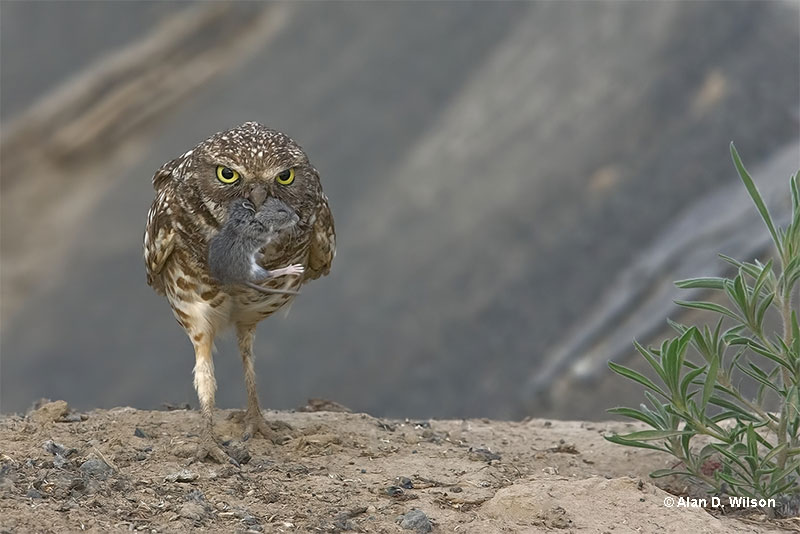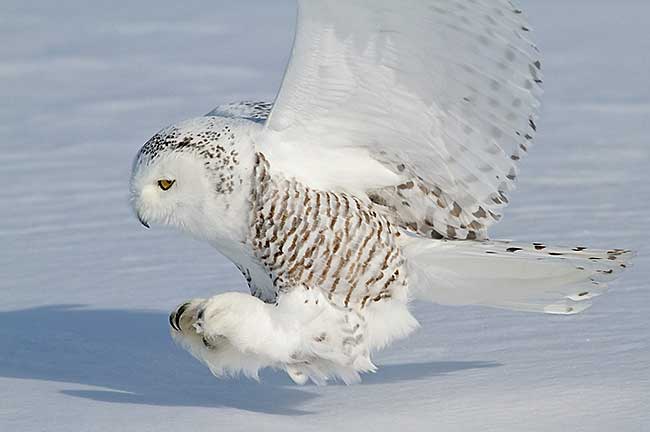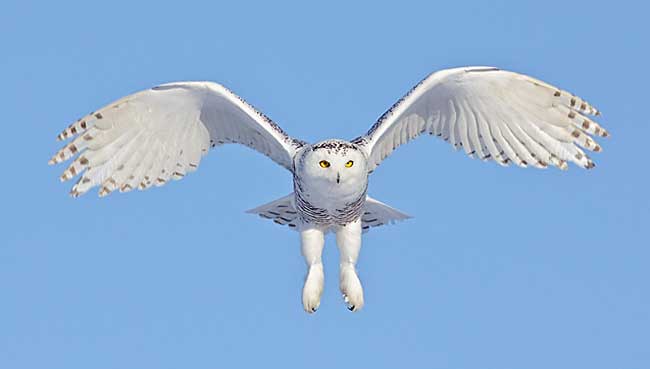
Owl legs may seem unusually long, and they possess unique characteristics that make them well-suited for the owl’s way of life. They are not only vital for perching and walking but also play a crucial role in hunting, flying, and temperature regulation.
But have you ever wondered why owl legs are so long and what makes them different from other birds? If so, you’re in the right place!
On this page
How Do Owls Use Their Feet?
Owls have evolved a unique set of adaptations that allow them to be successful predators. Among these adaptations are their feet, which play a crucial role in their survival. They use their feet for three main purposes: perching, walking, and catching prey.
The underside of an owl’s foot is covered with a rough and knobby surface that helps them grip surfaces and prey better. They have four toes, with two in the front, one in the back, and one that can be rotated to the front or back depending on their needs.
This ability to rotate their toes enables them to spread their razor-sharp talons wide apart, which increases their chances of successfully capturing prey. There is an interesting term for their toes – zygodactyl.

Snowy Owls, for example, have powerful legs, that they use in every aspect of their lives.
Another unique feature of owl feet is their “locking mechanism.” This mechanism allows them to lock their feet into place while perching and resting, without having to keep their muscles under tension. This adaptation helps them conserve energy and remain perched for extended periods.
In addition to perching and catching prey, owls also use their feet like hands. When in pursuit of prey, precision is vital. Owls use their talons to grip and manipulate food, guiding it into their bill for consumption. This skill allows them to eat a wide range of prey, from small rodents to larger birds.
Related: The Most Amazing Bird Statistics and Facts
Furthermore, some species of owls can use their feet to regulate their body temperature. They do this by radiating excess heat through the soles of their feet. Some owls also have feathers on their feet, which helps to keep them warm in colder climates. For example, Snowy Owls live primarily in tundra, and feathered feet protect them from frostbite.
Do All Owls Have Long Legs?
Compared to most birds, owls have relatively short thigh bones and long shin bones. Their knees are located near the top of their legs, close to the body, and are hidden under feathers. This means that you probably won’t even see them.
Another Phenomenon: Are there any featherless owls?
The bone structure is relatively close to mammals, owls still have joints and even ankles. Compared to humans, owls have short femurs and longer shins. Their ankle plays a huge part in stability and precision.
However, you may not see much of their legs at all, as they are often covered under feathers.

While all owls have this basic leg structure, the length of their legs can vary greatly depending on the species, their size, environment, and hunting methods. Smaller owl species, like Elf Owls tend to have shorter legs, while larger ones have longer ones. The environment in which an owl hunts can also influence the length of its legs.
For example, Burrowing Owls, who hunt in open areas, such as grasslands or deserts, tend to have longer legs. This is because they need to be able to capture prey in tall grass or walk on the ground to find food.
In contrast, owls that hunt in forests and other dense habitats have shorter legs because longer ones would get in the way of their maneuverability.
Fun Facts
- The shortest owl legs are somewhere around 4 inches long whereas the Eurasian Eagle-owl’s legs can be up to 15 inches long.
- Owls sometimes go fishing. It is rare, but they may perch or even lay near water, wait for the opportune moment, and snatch a fish into their talons.
- The Barn Owl has a sharp or serrated edge on the underside of their middle toe. This unique feature aids them in gripping prey and grooming.
- Owls have adaptations on their wings that enable them to fly silently, but their long legs also contribute to noise reduction. The length and bone structure of their legs help to absorb the shock of landing on trees and the ground, resulting in less noise and better sound dissipation.
Frequently Asked Questions
Why are owl legs so long?
Owl legs are so long to reduce air resistance when flying, aid in maneuvering and hunting, and facilitate temperature regulation.
Which owl has the longest legs?
The Eurasian Eagle-owl has the longest legs of all owls and they can be as long as 15 inches.
How strong are owl feet?
Owl feet have a grip strength of 200-500 pounds per square inch, which is ten times stronger than the average human grip.
Up next: Top 15 Fun Owl Facts
